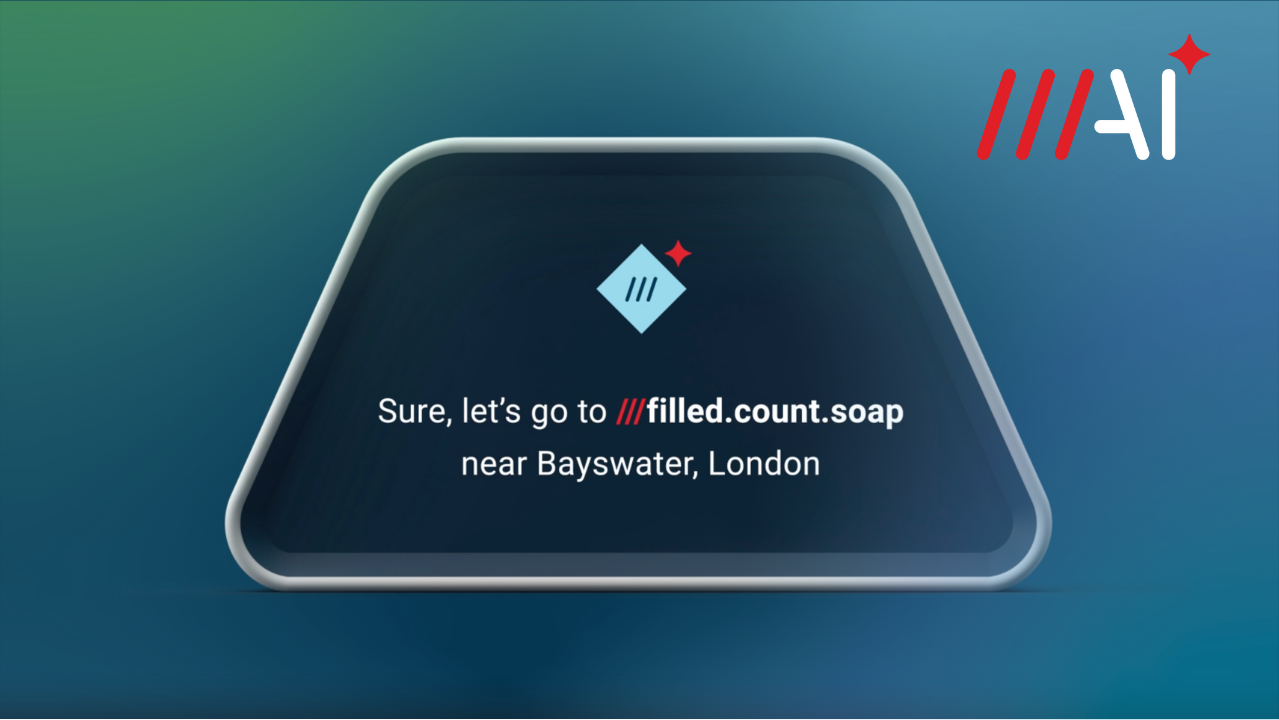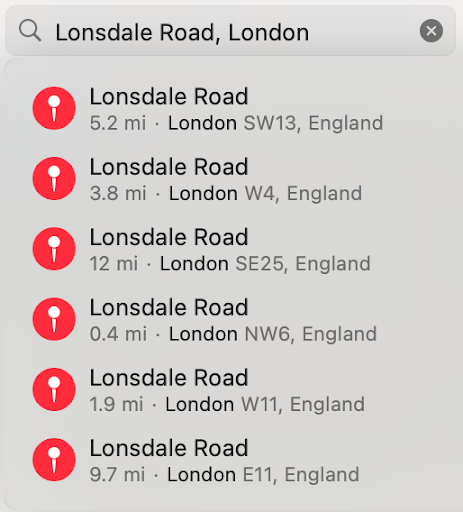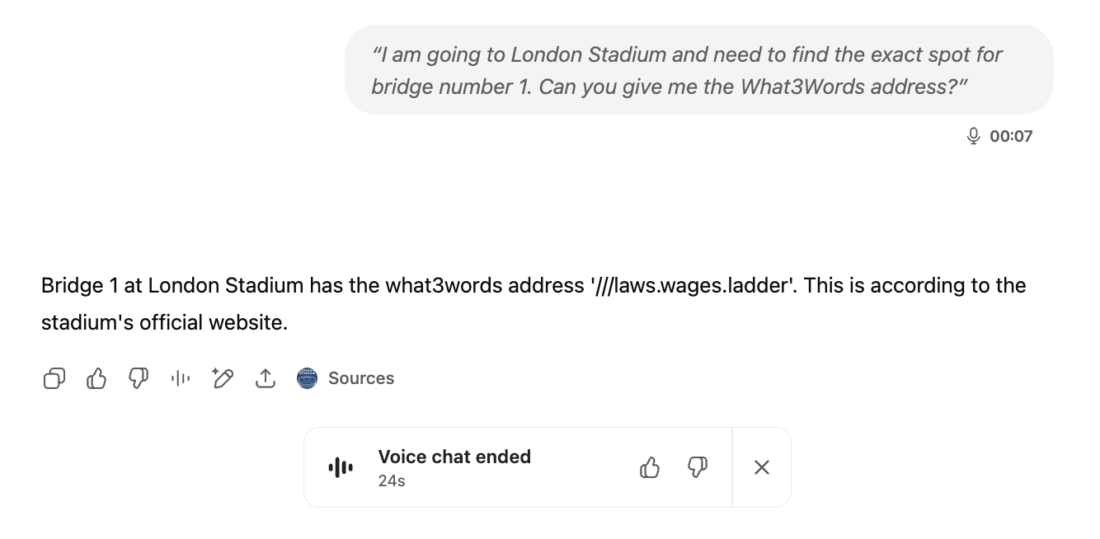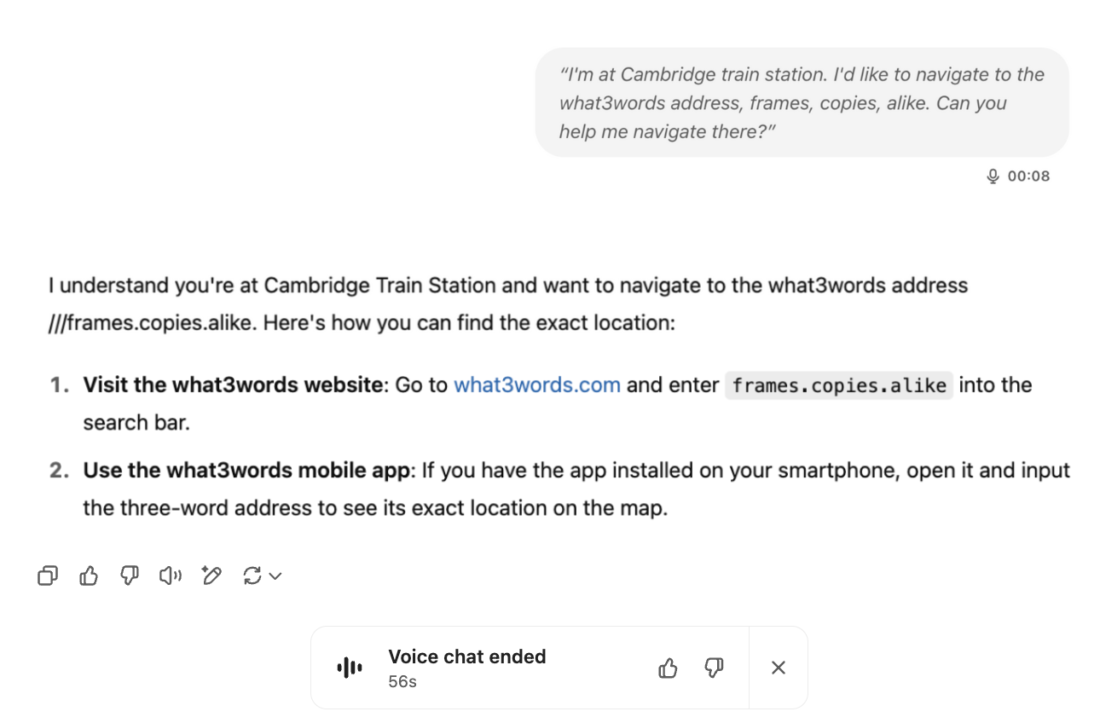
Why what3words is the future of AI Voice Navigation
AI in automotive isn’t just about futuristic features and the migration to self-driving. It’s about solving everyday frustrations and improving the in-car experience. AI does this by, for example, predicting breakdowns before they happen, enhancing driver safety with automatic emergency braking and making voice assistants more accurate so you can get to the right place first time – and that’s exactly where what3words fits in.
Let’s face it – traditional addresses weren’t designed for voice assistants or AI. They’re long, often duplicated (e.g there are many roads called “Lonsdale Road, London”), and sometimes just plain missing, especially if you’re in a new-build, heading to a national park or a remote spot. Big venues usually have just one address for the whole place, even if there are six entrances. Postcodes often cover large areas or multiple properties, so drivers frequently end up at the wrong location or have to work out the exact entrance themselves when they arrive.

Market appetite: Drivers want smarter, simpler navigation
The appetite for voice-powered navigation is clear. According to YouGov, 80% of people surveyed said they would find a vehicle voice assistant useful for setting navigational goals and listening to directions while driving. This isn’t just a nice-to-have; drivers expect their tech to make their journeys less stressful and more efficient. The demand for smarter navigation goes beyond speech recognition. Car companies are now using AI to transform how drivers find and reach their destinations. AI-powered navigation systems analyse real-time traffic, road conditions and even past trips to suggest the best routes. Navigation is becoming smarter, more adaptive and more aligned with what drivers actually want: simplicity, accuracy and less hassle on every journey.

AI is giving near-perfect voice recognition accuracy but there’s a catch…
Thanks to advances in voice-enabled AI like ChatGPT and a range of LLMs, voice assistants are now able to understand natural, conversational speech more effectively than ever before. However, even the smartest AI can only be as accurate as the data it accesses. If a voice assistant is working with traditional addresses, it may still struggle with ambiguous, duplicate, or incomplete information, compromising the user experience. This is where what3words stands out, providing a layer of precision that traditional addressing systems can’t match, in a format that is easily understandable by AI systems.

Why AI and what3words work so well together
- LLMs already “know” what3words: Years of public usage and online referencing mean that models have already been naturally trained on millions of examples of what3words addresses, making them easily recognisable
- Voice-friendly: The three-word format is easy for both people and AI to understand
- Format consistency: AI tools can reliably recognise what3words addresses in text and speech, and even extract them from documents, spreadsheets, or images
- Error-proof: Similar-sounding what3words addresses are far apart, so mistakes are easy to catch, particularly with auto-suggest feature
- Multilingual: what3words works in 60+ languages, so drivers around the world can use it in their native tongue
- One-shot accuracy: Each 3 word address is unique so no more guessing which “Lonsdale Road, London” you meant

The road ahead
The future of in-car AI is all about making life easier for drivers. And with what3words as part of that experience, drivers can say exactly where they want to go, clearly, quickly, and without confusion. A simple addition with a big impact that is already making navigation smoother for millions of people around the world, and with the future of AI in cars, this could soon be millions more.
If you’re exploring the future of AI voice and navigation and would like to understand more about what3words:
